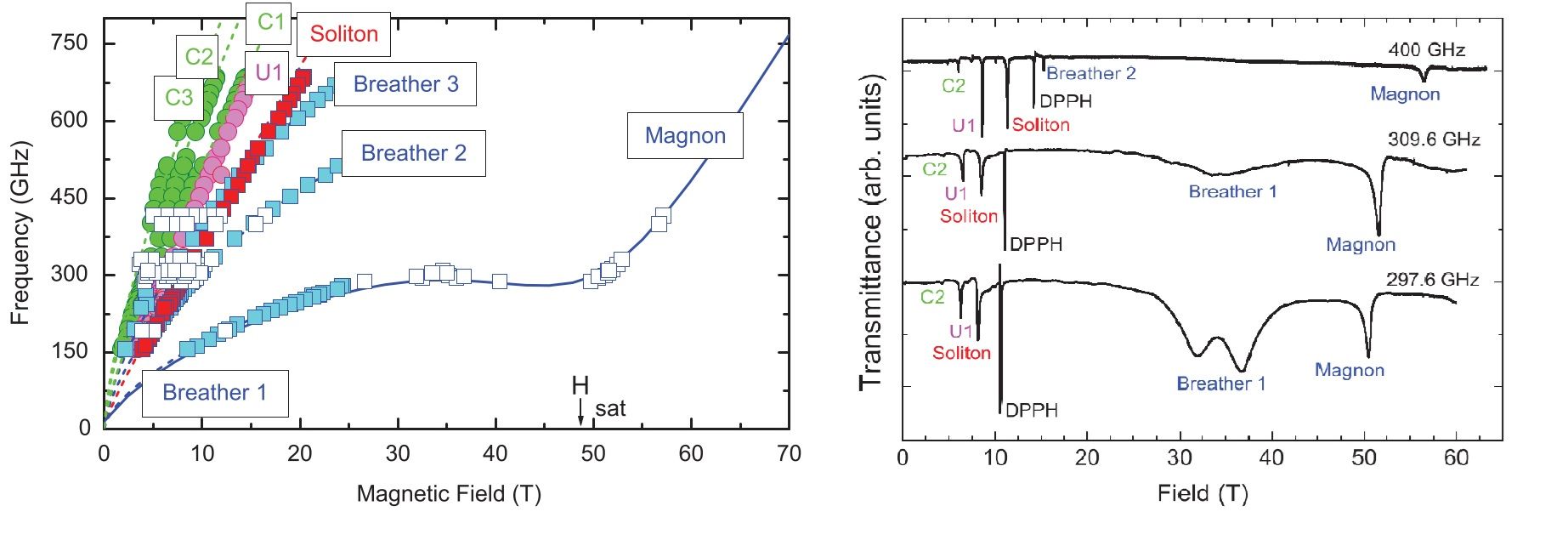| Local Contact |
Sergei Zvyagin |
| Field range |
up to 70 T |
| Temperature range |
down to 1.5 K |
| Available frequency ranges |
0.1 – 9 THz
|
| Sources |
VDI microwave chains (0.1-0.5 THz), THz molecular-gas laser (0.4-3.5 THz), THz free-electron laser (1.2 – 9 THz) |
| Sample size |
Ca 4x4x1 mm |
| Sample holder |
Faraday configuration |
| Sample environment |
He4 bath cryostat |
| Typical experiment |
 Frequency-field diagram of ESR excitations in the quasi-1D chain material Cu-PM with staggered DM interaction taken in magnetic fields up to 64 T at 1.5 K (left panel) [4]. Corresponding examples of ESR spectra (right panel).
Frequency-field diagram of ESR excitations in the quasi-1D chain material Cu-PM with staggered DM interaction taken in magnetic fields up to 64 T at 1.5 K (left panel) [4]. Corresponding examples of ESR spectra (right panel).
|
| Measurement examples |
1. M. Ozerov et al., Phys. Rev. B 92, 241113 (R) (2015)
2. F. Esser et al., Appl. Phys. Lett. 107, 062103 (2015)
3. M. Ozerov et al., Phys. Rev. Let. 113, 157205 (2014)
4. S.A. Zvyagin et al., Phys. Rev. B 83, 060409(R) (2011)
5. O. Drachenko et al., Phys. Rev. B 79, 073301 (2009)
6. S.A. Zvyagin et al., Rev. Sci. Instr. 80, 073102 (2009)
|
| |
|
 Frequency-field diagram of ESR excitations in the quasi-1D chain material Cu-PM with staggered DM interaction taken in magnetic fields up to 64 T at 1.5 K (left panel) [4]. Corresponding examples of ESR spectra (right panel).
Frequency-field diagram of ESR excitations in the quasi-1D chain material Cu-PM with staggered DM interaction taken in magnetic fields up to 64 T at 1.5 K (left panel) [4]. Corresponding examples of ESR spectra (right panel).

